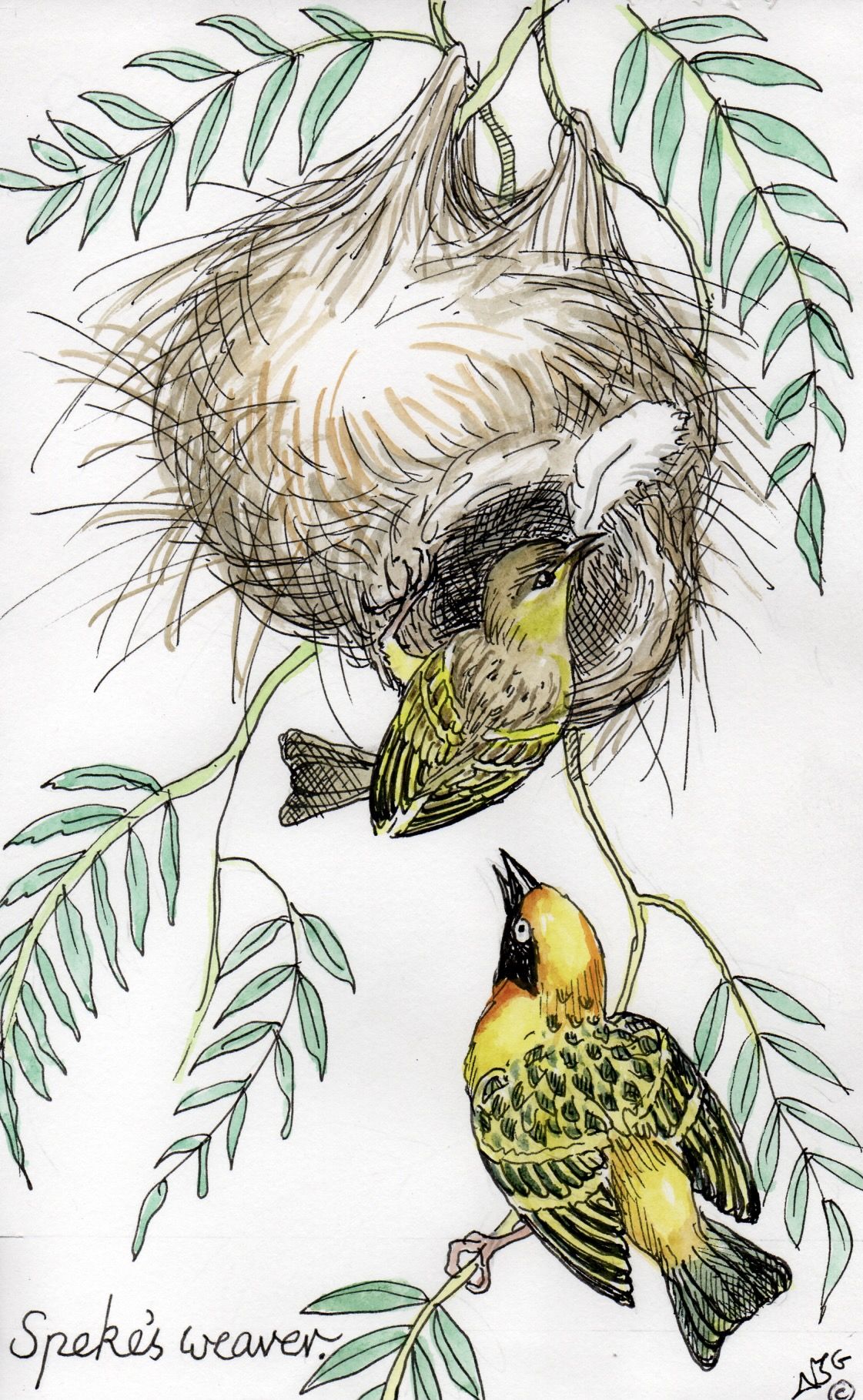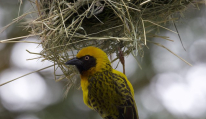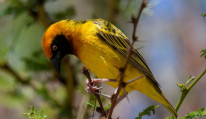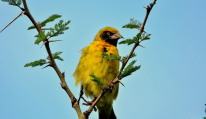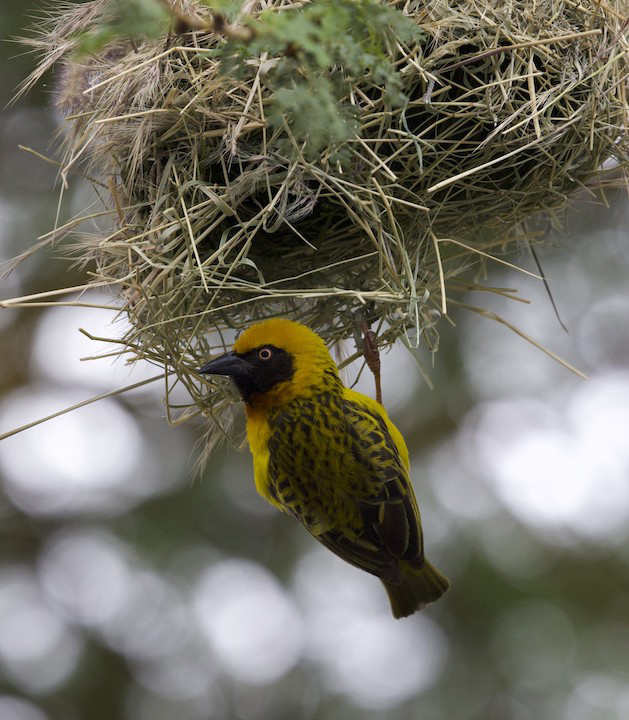Social Structure
Males can have more than one mate, and these weavers nest in colonies that can contain more than 200 nests in a single tree.
Communication
Known for their constant chattering in colonies, Speke’s weavers also call with a sharp “tseep” to make contact with each other.
Behavior
Often found in small groups, these weavers leave their breeding colonies when they are not nesting. Males will often destroy unused or partly completed nests.
Conservation
Least concern
Diet
Speke’s weavers feed on seeds and insects, particularly termites.
Breeding
Males can have more than a dozen nests in one tree; they often start building, mainly in acacia trees, before females arrive. While only the females incubate the eggs, both parents will feed chicks.
Friends & Foes
Parasitic fly larvae cause a significant amount of chick mortality, while other predators include hawks, buzzards, kites, and goshawks.
Population in Kenya
It is common in Kenya.
Range & Habitat
Speke’s weavers are found in some parts of eastern Africa.
Speke’s weavers depend on available water sources and can be found in savannas, bush, farmland, and towns in Somalia, Kenya, Ethiopia, and Tanzania. A common species, they are seen in some areas as crop pests.

